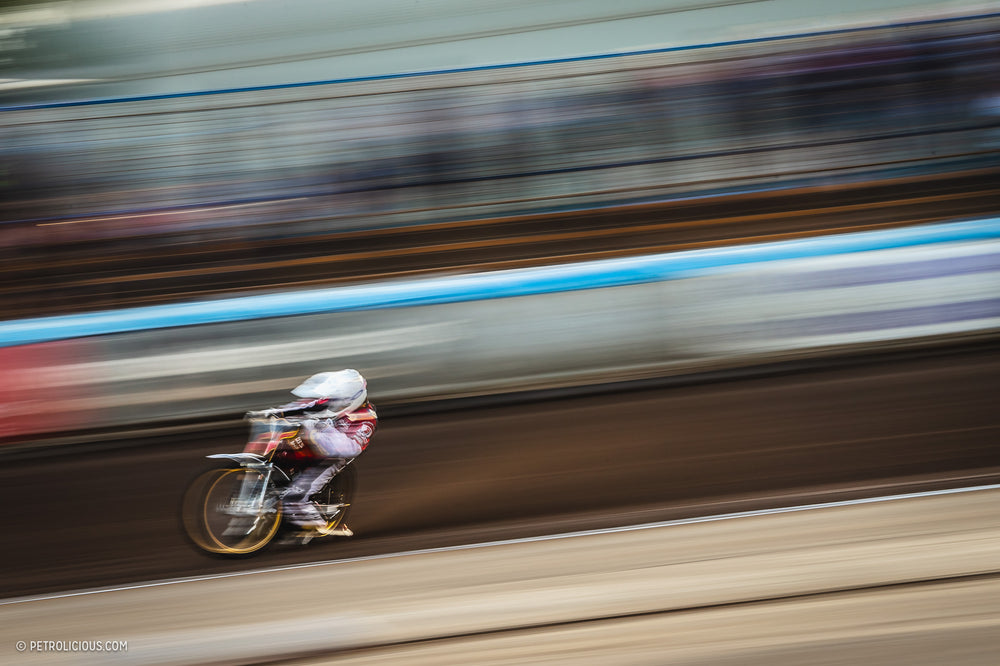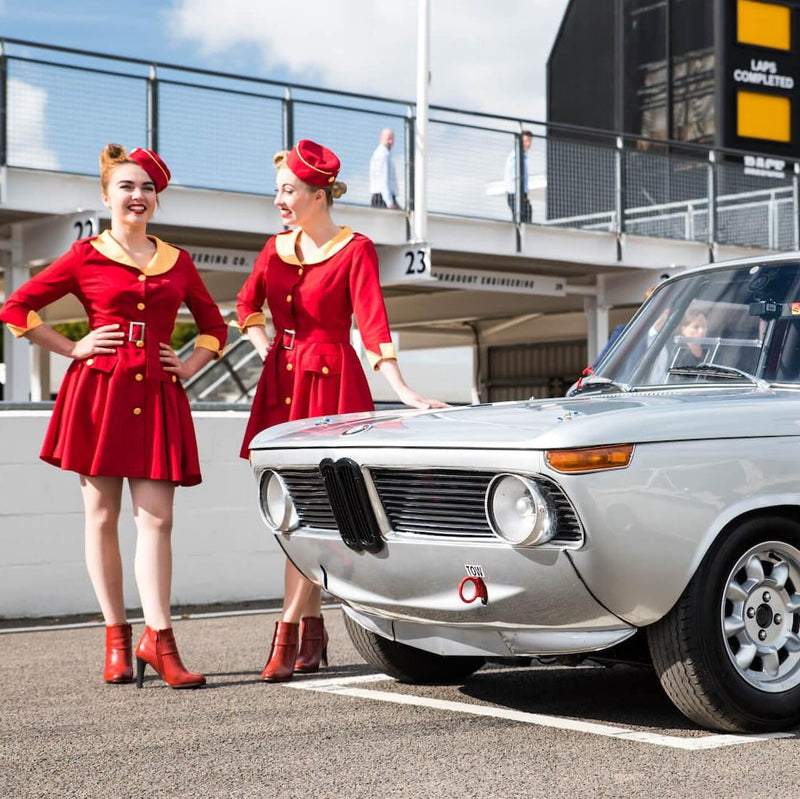A whistle goes and the air fills with the sound of 500cc engines firing up, the familiar thump created by a power plant with a solitary cylinder, beating a quick rhythm in what’s left of the early evening sunshine. The rider climbs aboard his odd-looking, almost armor-clad machine and completes the short loop to the start line. Along with his three competitors, he’s marshaled into place by the race referee. He makes a final adjustment to his goggles, probably out of habit than need, before grabbing the clutch and engaging his first and only gear, then as the revs rise and the starting tapes are raised all four riders dump the clutch and surge forward in a cloud of ethanol fumes, noise, mud, and shale to complete the four short laps of their heat. This is speedway motorcycle racing, and it makes for an evening of frantic, ultra-violent, and fast-paced racing that you need to find space for in your motorsport calendar. Even if you watch it just once, it’s worth it.



The origins of speedway are a little blurred. American racer Don Johns is recorded as using the broadsliding technique favored by the riders as early as 1914, and there is a strong claim that the sport had found its feet in the US by the early ’20s. Whatever the facts around the beginnings of the sport are, what is true is that it is not an awful lot different today than its pre-war roots. The bikes are simple, almost toy-like, with their single-cylinder methanol-fed motors. The wheels, with their skinny boots, look like they belong on a mountain bike rather than a motorcycle, and the rather antique girder forks resemble something more garden shed than cutting edge. Looks can be deceiving though, as these machines are all about going as fast as possible—these are among the most single-purpose racing machines I’ve ever seen. With a 0-60 time of around 2.5 seconds for the best pilots, they may be small, but they are mighty quick. Heats are frantic, lasting around a minute, in which time four loops are completed and points are awarded from three down to zero for the final finishing positions. These points are then added to each team’s tally and at the end of the evening’s racing, those with the most points take the win. Simple.









The top speed of the bikes is somewhere around 80mph—nothing to get too excited about in a vacuum—except when you remember that they have no brakes, and when traversing the oval track, they keep the throttle absolutely wide open and often with very little grip, if any. Using the aforementioned broadsliding technique, the competitors pitch into the turns flat-tracker style, steel-shod race boot leading the line, with the back end out and sliding, and bars turned to the lock stops. At full speed, it’s a ferocious spectacle as the bikes buck and bite as their skeletal wheels seek whatever grip they can get on the mud surface without slowing down.





Filth and muck are expelled sideways, coating the fans crowded into the stands, at first it feels unpleasant but as the night carries on this becomes part of the event and you feel closer to the action for it. Whilst at full chat it is brutal, watching the riders navigate the bends in slow motion is almost poetic, there’s a certain beauty to the viciousness, which can all be viewed in stunning high motion thanks to the involvement of BT Sport, who believe in this niche motorsport enough to be providing comprehensive coverage of national and international events. They’re in town tonight, and the presence of their cameras and TV trucks feels slightly odd in the somewhat ramshackle surroundings.




The involvement of major sponsors and broadcasters can often change a sport for the worse though, and whilst a certain amount of modern professionalism is undoubtedly needed to ensure the survival of this niche competition, I hope that it manages to retain the essence of what makes it such a unique event in the first place. The crowd for example, are as much a part of this as the action on track, and there is a wonderful colloquial atmosphere in the stadium, especially as dusk turns to night and the theater is played out under floodlights. Songs are sung and friendly heckles are aimed at riders between heats. The format of the racing itself builds the excitement with its fast and frantic delivery, the points are accumulated with speed and the racers must give everything they have in one short blast before it starts up again for another group. There is no pit stop strategy, fuel saving, nor tire conservation to worry about. This is a one chance, winner-take-all sprint. It’s a fight and a battle that is played out at greater pace than a silver screen boxing match.






At the end of the night I’m breathless, the 15 heats have flown by in a blur of color and noise, and at the end of it all it’s a victory for the home side, the Kings Lynn Stars. I arrived at the event having never really seen speedway racing before, but as I leave, I am the sport’s latest convert. The format of hurried competition and a mass involvement team sport played out on motorcycles works tremendously well, and I can’t quite believe I’ve managed 33 years without coming into contact with it. Hopefully the renewed TV coverage can bring this sport to a new audience and confirm its rightful place as one of the most entertaining forms of modern motorsport (yet it’s still quite vintage in many ways, technique mainly). It’s not the most tasteful way to ride a motorcycle I’ll grant you, but I’ll be damned if it’s not fascinating to be a part of.























































